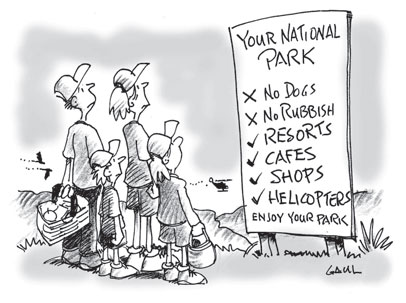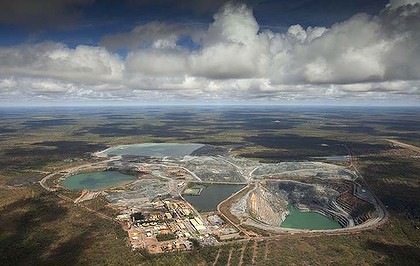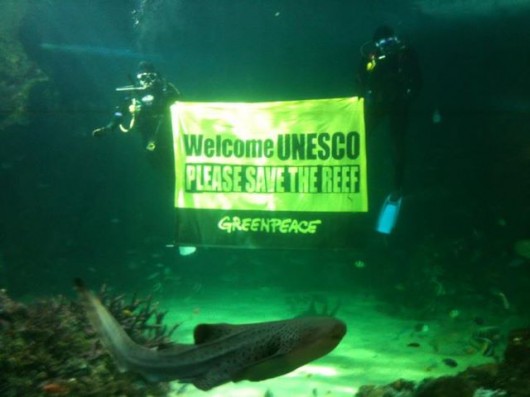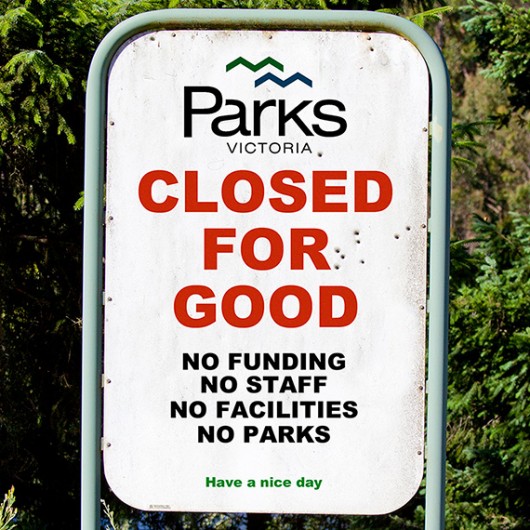National Parks and World Heritage cons and misnomers
Wednesday, September 5th, 2012 ‘National Parks’ in Australia are merely State Parks
They exist at the whim of State politicians
‘National Parks’ in Australia are merely State Parks
They exist at the whim of State politicians
.
In Australia, ‘National Parks‘ are a misnomer.
National Parks across Australia are not protected, conserved and managed by the Australian Government at national level, as the name would suggest. Instead, the custodial responsibility is delegated to the respective States.
National parks in each Australian State, such as in New South Wales, or Queensland or Tasmania, are protected, conserved and managed under that State’s national parks legislation, not under national legislation. So in Australia, the term ‘National Park‘ is quite misleading. Australians presume that our national parks are nationally protected, but they are not.
The respective ‘National Parks and Wildlife Services‘ are similarly also a misnomer. Each State and Territory has its own separate National Parks and Wildlife Service. In New South Wales (NSW), ‘national parks’ are managed by the NSW National Parks and Wildlife Service. In Tasmania, the State-controlled Parks and Wildlife Service manages national parks only in Tasmania.
In Victoria, the State-based agency is called Parks Victoria, which manages national parks in Victoria under Victorian legislation – the Parks Victoria Act 1998 and reports to the Victorian Minister for Environment and Climate Change. While in Queensland, the Queensland Parks and Wildlife Service comes under the Department of National Parks, Recreation, Sport and Racing.
When a government lumps national parks with racing, it regards the values of natural heritage in anthropocentric exploitative terms.
 .
.
Neglectful Underfunding
.
Worse is that the delegated State Government custodians are invariably so short of funding, that critical funding to properly protect, control and manage national parks is not provided. The Australian Government knows this, yet withholds vital funding so that the primary duties of protecting and conserving national parks can be fundamentally fulfilled.
State Governments select other funding priorities according to election cycles. In the 2012-13 budget year, the NSW Government has cut $55 million in recurrent funding and $22 million in capital expenditure budget in its management of national parks and to help protect native fauna. [Source: ‘NSW environment suffers $77m budget cut’, Jun 12 2012, ^http://news.ninemsn.com.au/national/8482272/nsw-environment-suffers-77m-budget-cut]
In Queensland, the State Government in 2012 has not only removed one hundred jobs from the Queensland Parks and Wildlife Service, closed regional offices, and reduced the number of QPWS regions from nine to six, but plans to revoke 875,000 hectares of national parks land across the State. [Source: ‘LNP Government: Mean To Students, Tricky On National Parks’, by Annastacia Palaszczuk, 20120719, ^http://www.queenslandlabor.org/2012/07/19/lnp-government-mean-to-students-tricky-on-national-parks/]
In Victoria in 2012, more than 130 jobs have been cut from Parks Victoria and several hundred from the Department of Sustainability and Environment (DSE). [Source: ‘Jobs and courses feel Budget strain’, by Kate Dowler, Weekly Times Now, 20120509, ^http://www.weeklytimesnow.com.au/article/2012/05/09/479741_national-news.html]
Last Easter in April 2012, some state and national parks are facing industrial action by Parks Victoria rangers belonging to the Community and Public Sector Union.
‘On the surface this may appear to be a simple wage dispute, but in fact it’s just a symptom of a larger and much more serious disease. It’s no secret that Parks Victoria is suffering from chronic underfunding. Parks and reserves across Victoria are seeing the results of decades of government cut-backs. These funding cuts affect our parks and reserves in many ways. From the supply of basic amenities (such as toilet rolls), all the way to establishing and maintaining user facilities such as walking and mountain bike trails as well as creating new management and environmental plans for the future. Looking after our public spaces is, quite simply, a massive job and if it is to be done correctly it will require substantial government funding.
Many Parks Victoria rangers do an amazing job in increasingly difficult circumstances. One of my ranger friends commented that ‘productivity improvements’ was in fact government speak for ‘saving money’. [Source: ‘Parks Victoria: Death By a Thousand Cuts’, by lenn Tempest, April 6, 2012, ^http://osp.com.au/?p=3253]
.
Belittling the National Parks Status
.
Just as bad is that the role of National Parks and Wildlife Service at each State jurisdiction has become swallowed up within mega-departmental portfolios. Australia used to have dedicated ministers for environment. Environment was their sole responsibility and national parks featured as a key part of that responsibility. But over recent decades, all the state governments have seen fit to bundle the responsibility for national parks within a large range of disparate portfolio responsibilities to one government minister.
In Tasmania, national parks responsibility falls under the responsibility of the Department of Primary Industries, Parks, Water and Environment – tagged on at the end. The current minister responsible is Brian Wightman MP, who is also Minister for Environment, Parks and Heritage (a different department name) and simultaneously Minister for Justice. How much time and energy can Wightman dedicate to national parks in his working week?
In New South Wales, the NSW National Parks and Wildlife Service (NPWS) is part of the Office of Environment and Heritage (OEH), within the NSW Department of Premier and Cabinet. The delegated minister is Robyn Parker MP who is the Minister for the Environment and the Minister for Heritage. These functions are relatively compatible, yet only a few years prior under the previous government, NPWS came under the Department of Environment, Climate Change and Water, and the various ministers responsible for varying short stints, also had other unrelated yet demanding portfolios such Commerce and Health.
In Queensland, Steven Dickson MP is responsible for National Parks, Recreation, Sport and Racing. In Victoria, Parks Victoria is lumped in with the Department of Sustainability and Environment, Catchment Management Authorities, Commissioner for Environmental Sustainability, Environment Protection Authority Victoria, Landcare Victoria, Sustainability Victoria and Zoos Victoria, which all report to Ryan Smith MP is Minister for Environment and Climate Change as well as being Minister for Youth Affairs. How many minutes does Smith give Parks Victoria in a given week?
The extreme bundling of so many responsibilities with the national parks function, effectively belittles its role.
The dilution of the national parks role is compounded by the trend of the short term assignment of a given minister to the portfolio, even within the one term of government, let alone when governments change hands. And where is the ultimate guardian for Australia’s national parks in all this – wiping its hands of responsibility and accountability for Australia’s most precious ecological assets.
Further, one can think of no minister for the environment who has ever had formal training or qualifications in environmental scence, or having been a National Parks ranger. The ultimate responsibilities for environment are delegated to politicians with little or no understanding of managing the natural environment, with all its complexities. In New South Wales the current Minister for Environment and Heritage is qualified in child day care.
.
.
World Heritage managed at State Level
.
State delegation of national parks even applies to national parks in Australia that have been listed as World Heritage Areas, like the Blue Mountains National Park, Fraser Island National Park, Great Barrier Reef National Park, Kakadu National Park, and Tasmanian Wilderness. While the Australian Government has an international obligation to protect and conserve World Heritage properties, those World Heritage properties do not become Australian Commonwealth property. State and local laws still apply. The only protection afforded to World Heritage properties is that land uses must not threaten any of the outstanding universal values of the property.
World Heritage listed properties in Australia are supposed to be managed by the Australian Government under obligations that the Australian Government signs up to under the World Heritage Convention for each listed property.
 Rio Tinto’s Ranger uranium mine inside Kakadu World Heritage, Northern Territory
[Source: ‘Radioactive threat looms in Kakadu’, 20110416, by Lindsay Murdoch, Jabiru, Sydney Morning Herald,
^http://www.smh.com.au/environment/radioactive-threat-looms-in-kakadu-20110415-1dhvw.html]
Rio Tinto’s Ranger uranium mine inside Kakadu World Heritage, Northern Territory
[Source: ‘Radioactive threat looms in Kakadu’, 20110416, by Lindsay Murdoch, Jabiru, Sydney Morning Herald,
^http://www.smh.com.au/environment/radioactive-threat-looms-in-kakadu-20110415-1dhvw.html]
.
The management objectives for World Heritage properties are part of Australia’s general obligations under the World Heritage Convention, which primarily includes protecting and conserving the World Heritage values of the given World Heritage property. However, the Australian Government chooses to achieve this objective by what it describes as “recognising the role of current management agencies in the protection of a property’s values” (that is by government agencies in their respective States), but also delegating custodial responsibility to the local community “in the planning and management of a World Heritage property.
In doing so, the Australian Government wipes its hands of its signed up custodial responsibility to protect and conserve Australia’s World Heritage listed properties. This is most evident with the Queensland Government currently allowing dredging in Gladstone Harbour within the Great Barrier Reef World Heritage. It is also most evident with the Tasmanian Government allowing clearfell logging adjacent to the Tasmanian Wilderness World Heritage.
The Australian Government is also liberal with its interpretation of protecting and conserving World Heritage values by what it describes as “allowing provision for use of the property which does not have a significant impact on the World Heritage values and their integrity.”
[Source: ‘Management of Australia’s world heritage listed places’, Australian Government, Department of Environment etc (currently called the Department of Sustainability, Environment, Water, Population and Community, ^http://www.environment.gov.au/heritage/about/world/managing.html].
‘We have become, by the power of a glorious evolutionary accident called intelligence, the stewards of life’s continuity on earth. We did not ask for this role, but we cannot abjure it. We may not be suited to it, but here we are.’
~ Steven Jay Gould, paleontologist
.
 Industrialisation of the Great Barrier Reef
The dredging in Gladstone Harbour for the seam gas has been blamed by local environmentalists for the area’s poor water quality
and a skin disease affecting marine life. Green activists say dredging has adversely affected whales and dugongs in the area.
[Source: Queensland slams UNESCO, defends gas on the barrier reef
Industrialisation of the Great Barrier Reef
The dredging in Gladstone Harbour for the seam gas has been blamed by local environmentalists for the area’s poor water quality
and a skin disease affecting marine life. Green activists say dredging has adversely affected whales and dugongs in the area.
[Source: Queensland slams UNESCO, defends gas on the barrier reefPosted on June 5, 2012, ^http://rowenadelarosayoon.wordpress.com/2012/06/]











